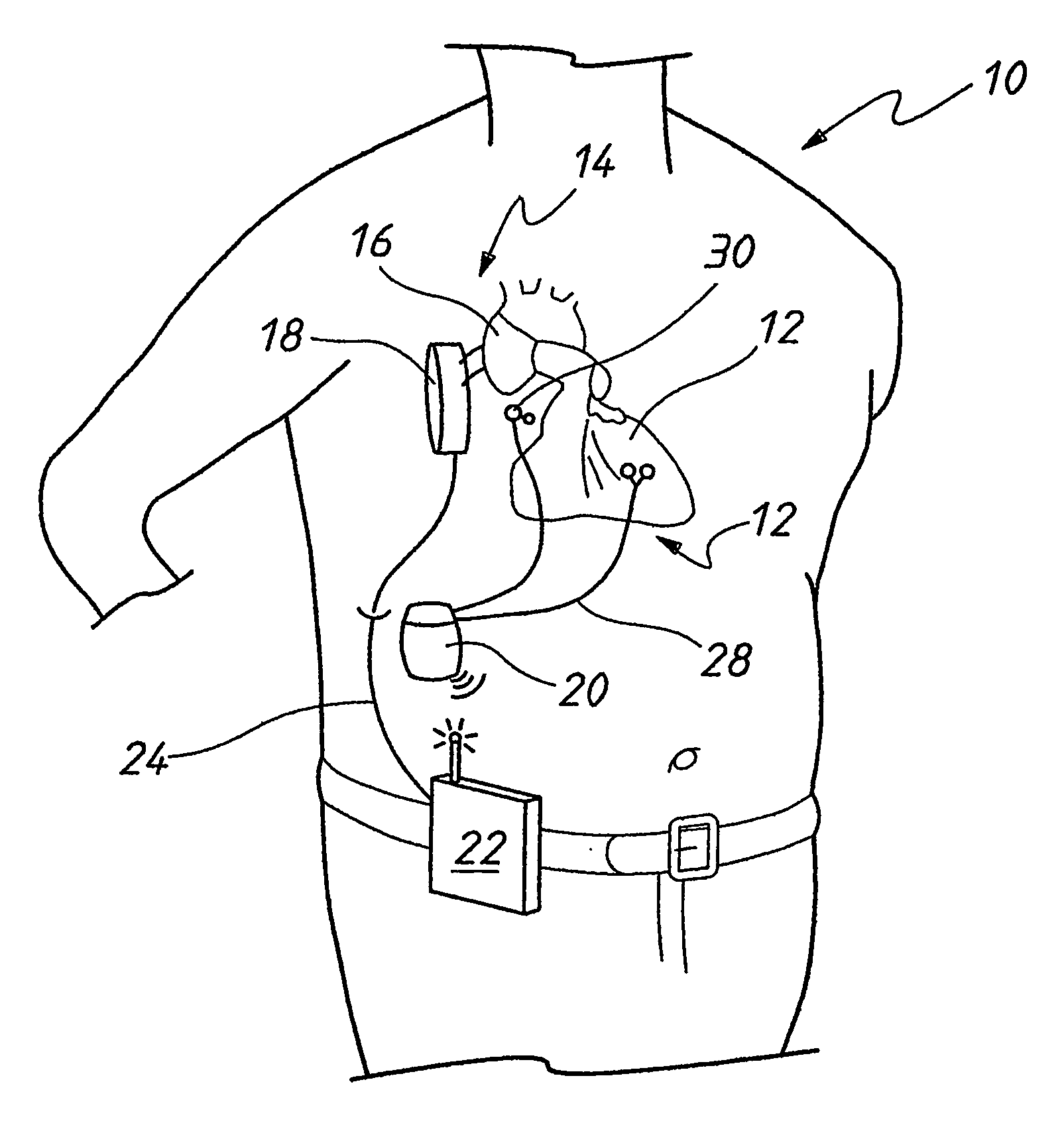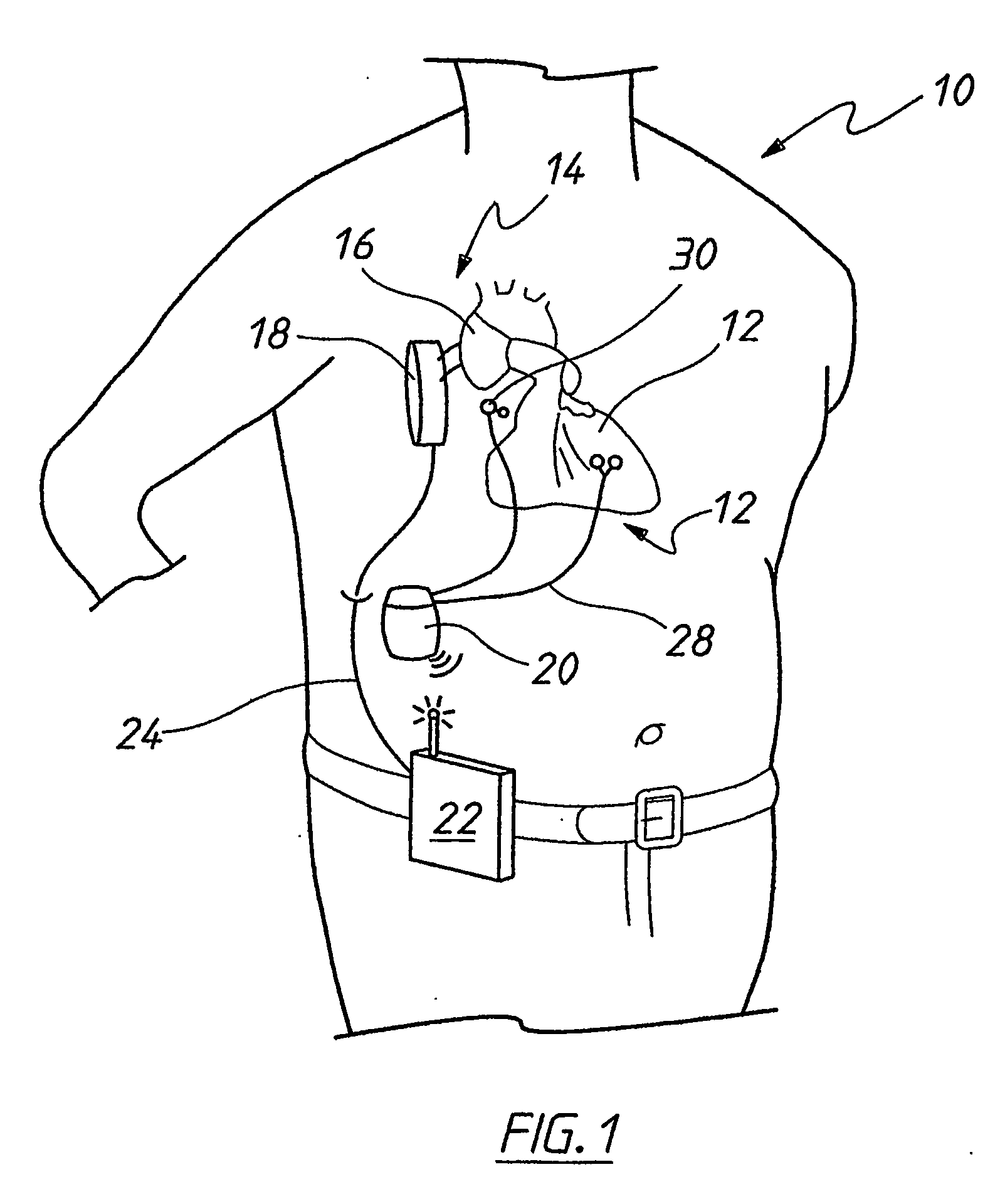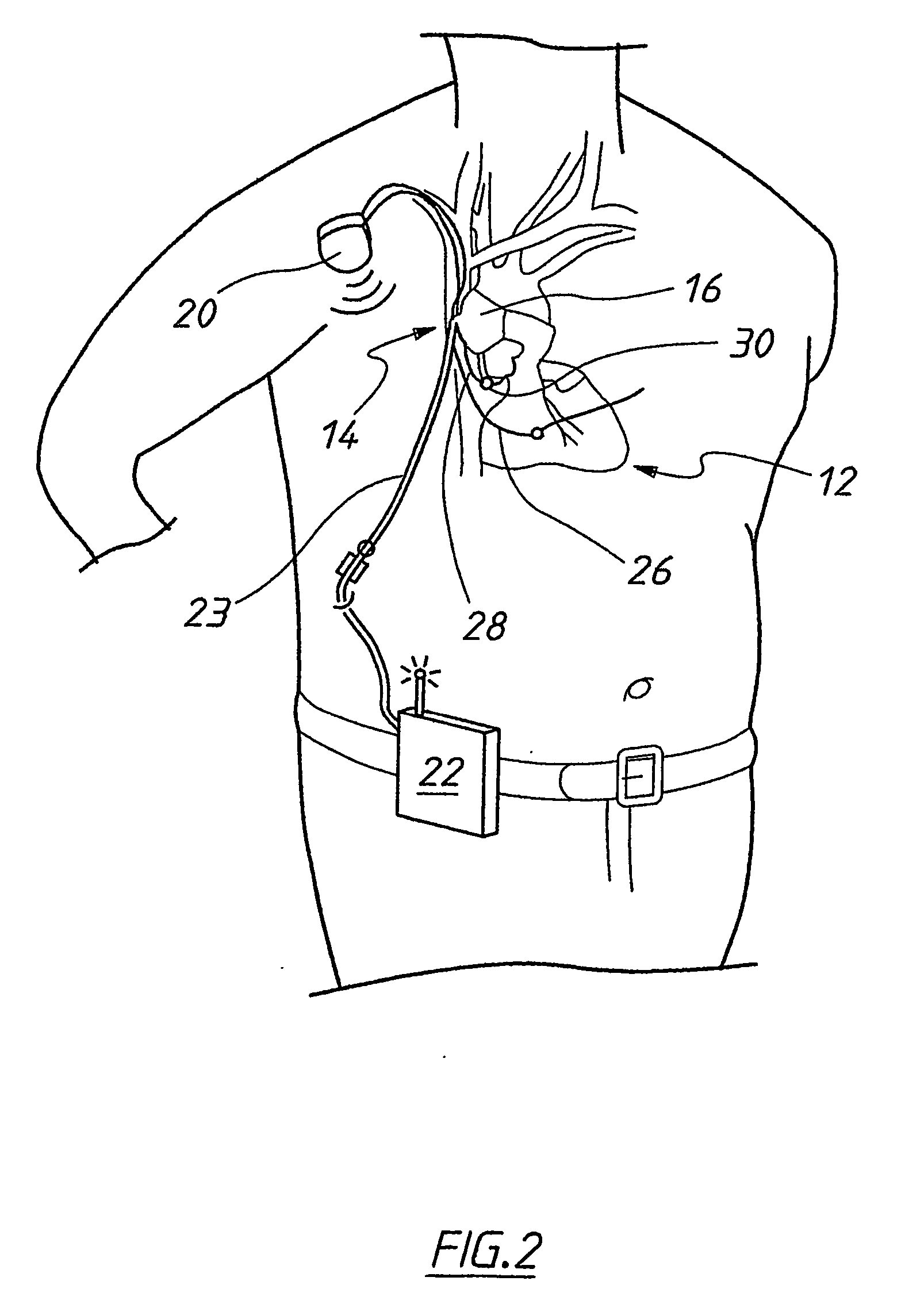Synchronization control system
a control system and synchronization technology, applied in the field of synchronization control systems, can solve the problems of not being suitable for long-term use, broad-based and inaccurate timing purposes, and severely limited methodological application for controlling heart assist devices, and achieve the effect of rapid correction of the condition
- Summary
- Abstract
- Description
- Claims
- Application Information
AI Technical Summary
Benefits of technology
Problems solved by technology
Method used
Image
Examples
Embodiment Construction
[0052] By way of further background, the DSPT has the basic modalities of sensing, transmitting, and programmability.
[0053] Sensing is the capability to detect and interpret a patient's native heart electro- and phonocardiograms (ECG's and PCG's respectively). An implanted sensing lead detects the patient's native heart electrical activity and transmits it to the DSPT circuitry. The firmware and / or software within the DSPT unit interprets the patient's R-wave and transmits a signal indicating R-wave detection. An implanted microphone lead detects the patient's native heart sounds and transmits it to the DSPT circuitry. The firmware and / or software within the DSPT unit interprets the patient's heart sounds and transmits a signal indicating S1 and S2 detection.
[0054] Programmability is the capability to allow a physician to adjust the DSPT's sensing and transmitting functions to the patient's individual needs. This is achieved by using a laptop-like device, typically called a progra...
PUM
 Login to View More
Login to View More Abstract
Description
Claims
Application Information
 Login to View More
Login to View More - R&D
- Intellectual Property
- Life Sciences
- Materials
- Tech Scout
- Unparalleled Data Quality
- Higher Quality Content
- 60% Fewer Hallucinations
Browse by: Latest US Patents, China's latest patents, Technical Efficacy Thesaurus, Application Domain, Technology Topic, Popular Technical Reports.
© 2025 PatSnap. All rights reserved.Legal|Privacy policy|Modern Slavery Act Transparency Statement|Sitemap|About US| Contact US: help@patsnap.com



